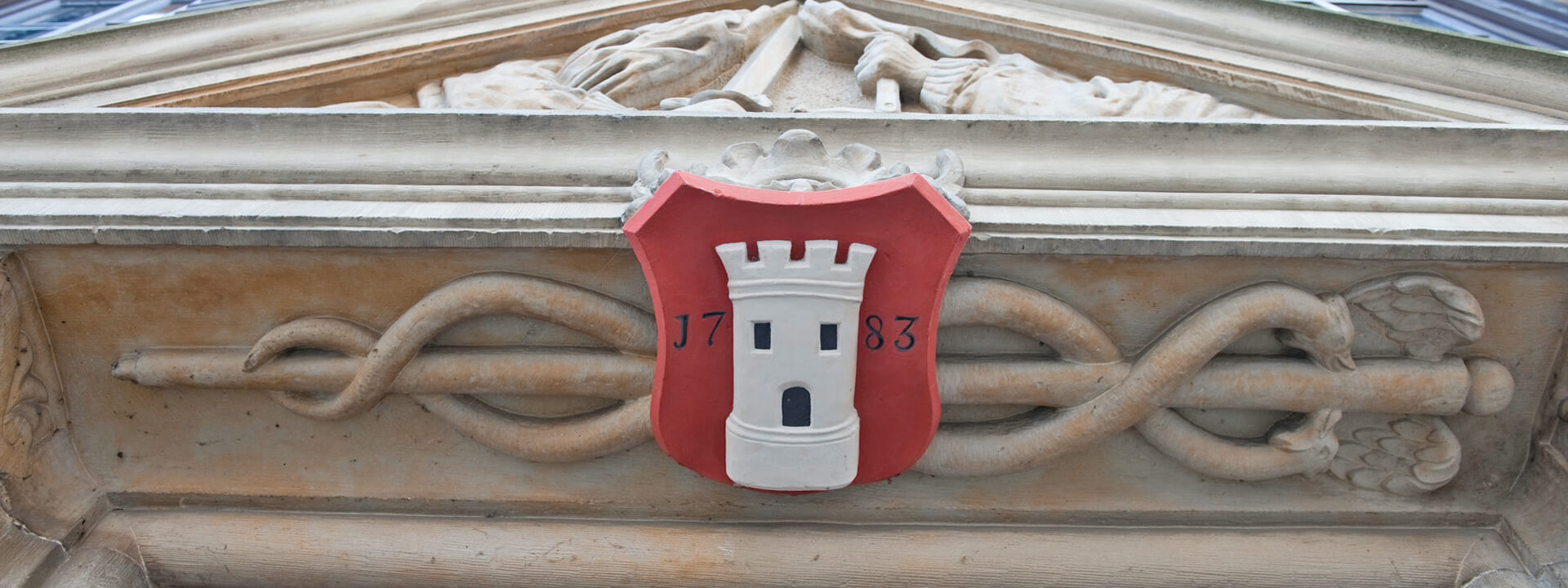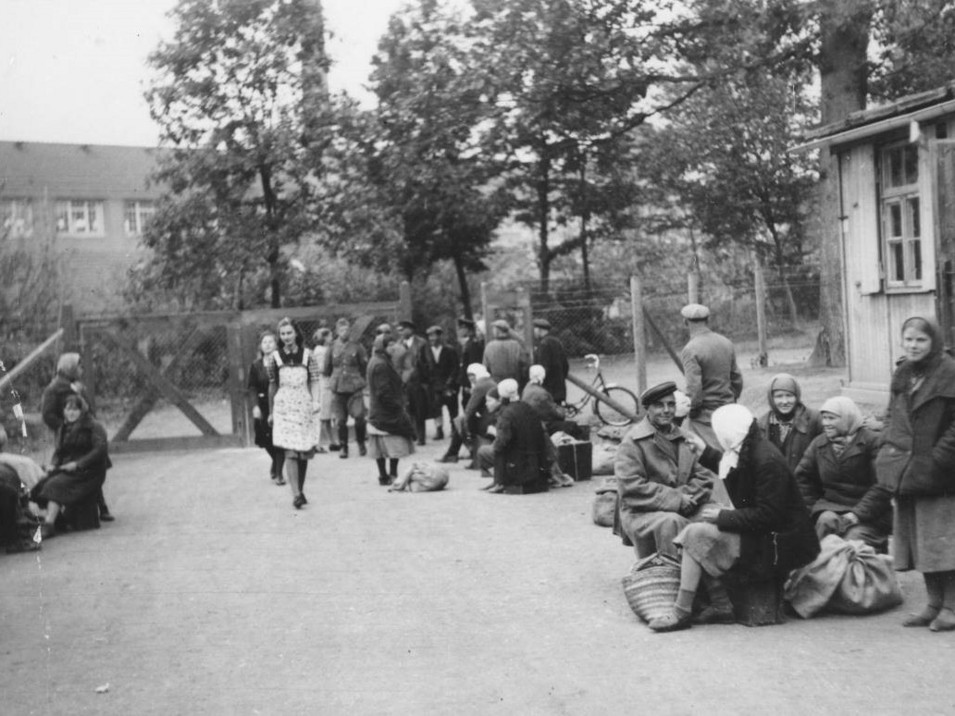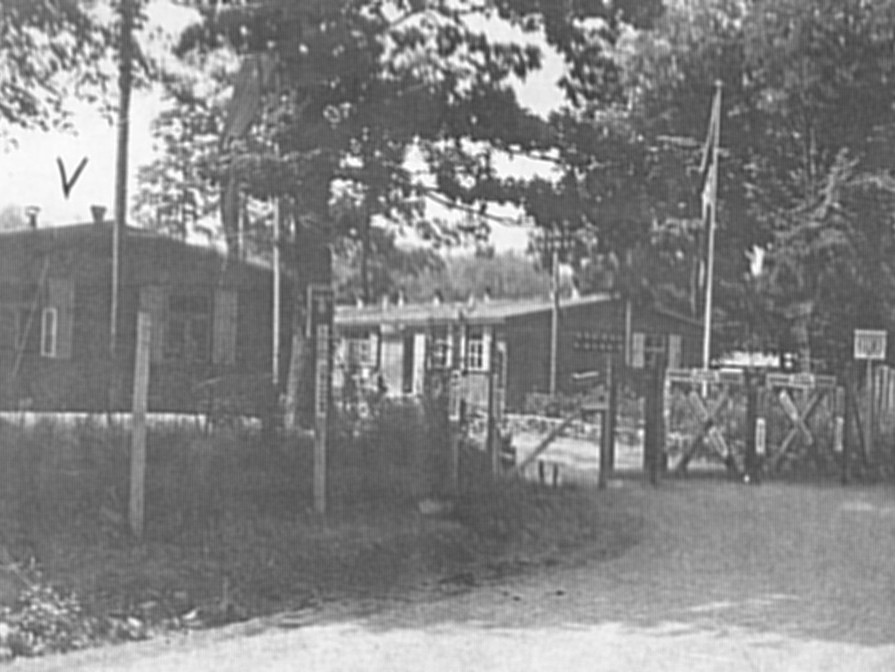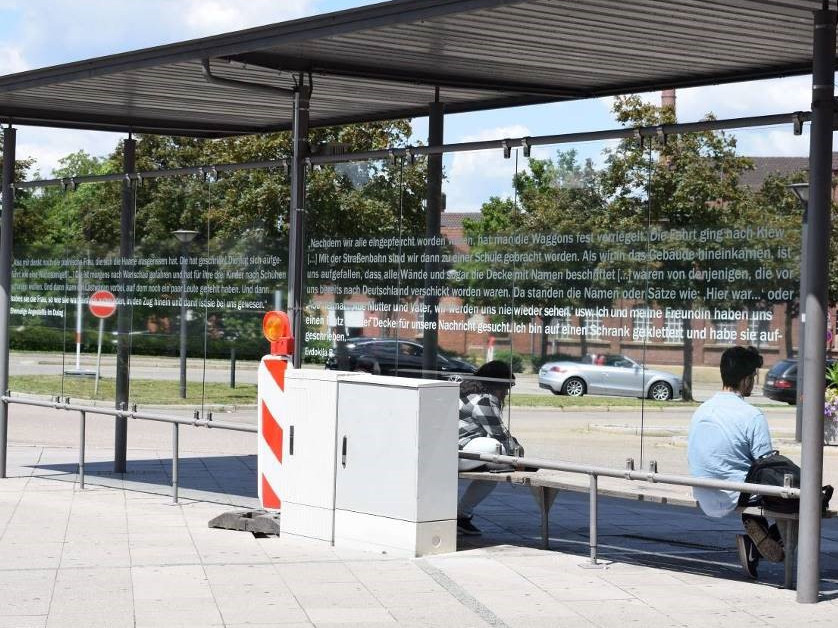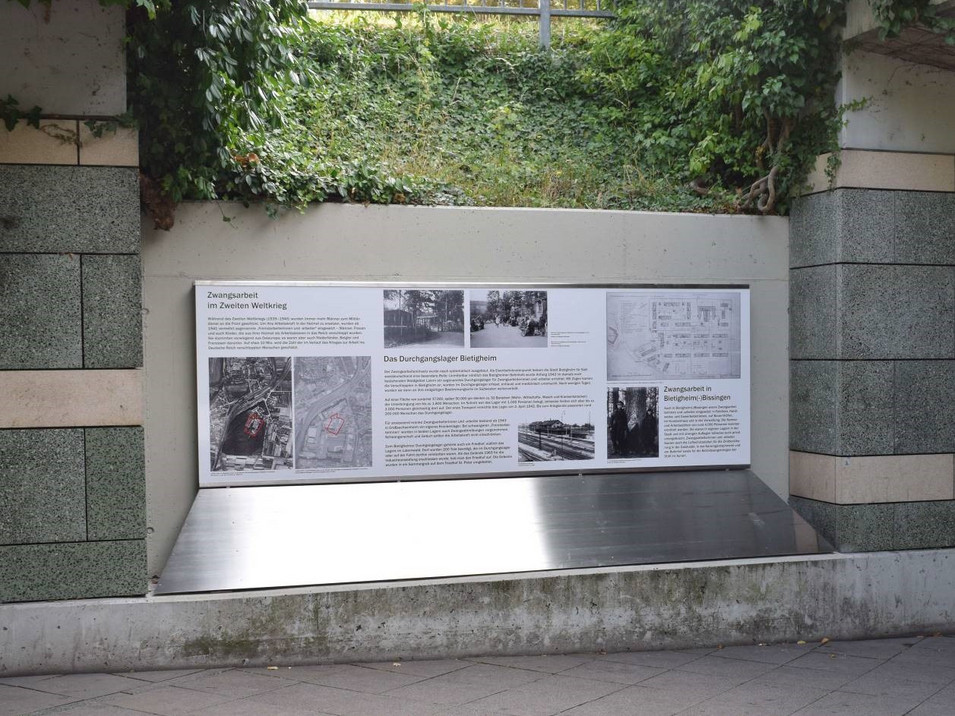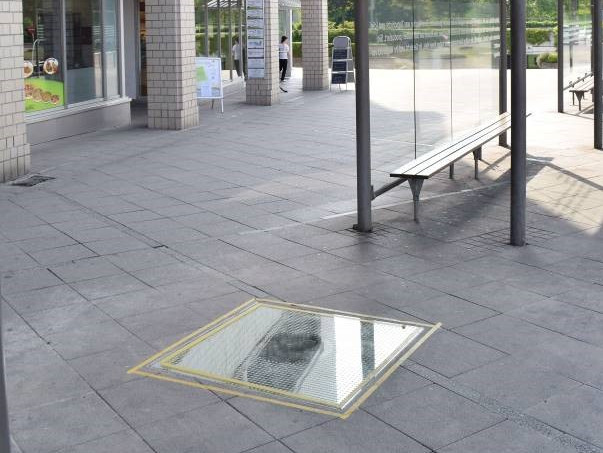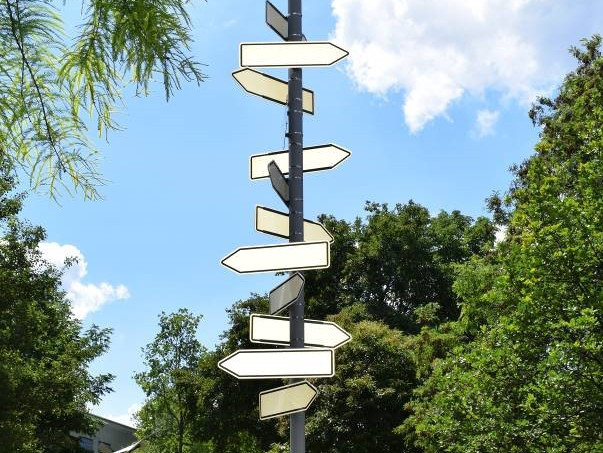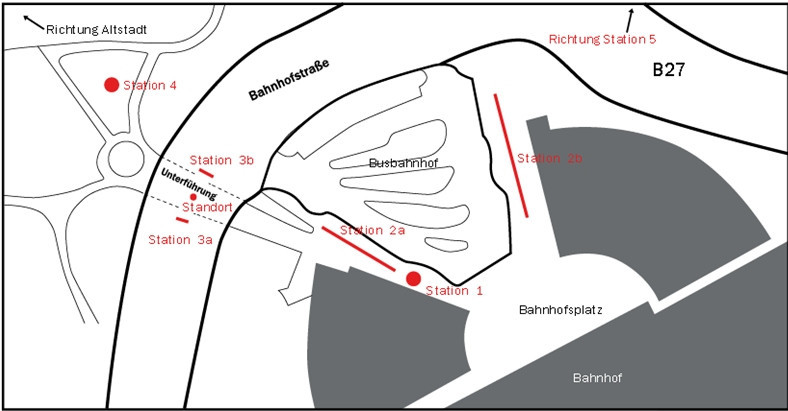Forced Labor
In World War 2
During the Second World War (1939-1645), more and more men were sent to the front for military service. In order to replace their manpower back home, more and more so-called "foreign workers" were used from 1941 onward - men, women and even children who were dragged from their homeland into the Reich as labor slaves. They came mainly from Eastern Europe, but also included Dutch, Belgians and French. The number of people dragged to work into the German Reich during the war is estimated at around 10 million.
Transit camp Bietigheim
The use of forced labor was quickly expanded systematically. The city of Bietigheim played a special role for southwestern Germany as a railroad hub: Beginning in 1942, a so-called passageway for forced laborers was built in the Laiern forest area, which was then still standing, not far south of the Bietigheim train station.
You can find more information in the right-hand column or at the end of the page in the pdf file provided.
The Memorial
In the right-hand column, or at the bottom of the page when you use a mobile phone, you will find detailed information on the memorial and speeches by Mayor Jürgen Kessing and Prof. Dr. Thomas Schnabel on the occasion of the transfer of the reminder on July 1, 2018.
Explanation
Station 1
A large clock is reflected on the floor of a bus stop. With its reversal of time, it refers not only to the view into the past as a process of recognition, but also to the robbed time of life of the people who were channeled through the labor camps and forced to work in foreign places.
Station 2 a and 2b
On the glass fronts in the waiting area of the bus station, you can read large scale excerpts from quotes from former forced laborers, as well as other time references to the camps. Due to the transparency of the glasses, the present and the narrated past are mixed up here. Texts quoted from Christine Sämann: The transit camp in Bietigheim. Forced Labor during National Socialism - Interpretation and Functions of the Transit Camp for "foreign workers" in Bietigheim with its camps for the sick in Pleidelsheim and Großsachsenheim.
Station 3a and 3b
Boards provide information on forced labor in the Second World War and on the Bietigheim transit camp, as well as on the memorial of Sara F. Levin.
Station 4
On an eight-meter-high mast, twelve signs, which bear no inscription, point in different directions. They symbolically refer not only to the countries from which the people were deported, but also to the places of forced labor during the Nazi era.
Station 5
The memorial also includes a multi-part documentary work. It is the artistic exploration of the former camp site. The site is now an industrial area and is completely sealed off by buildings and roads. The work will be presented in the Bogenviertel on the former DLW site. As most important industrial enterprise in the city of Bietigheim at the time, Deutsche Linoleumwerke (lit., "German Linoleum Plants") was also the main place of employment for those forced to work in the city.


